King Kong, Minnesota. Population: Mario.
Can Minnesota lay claim to the giant beast AND the Nintendo icon?
Can Minnesota lay claim to the giant beast AND the Nintendo icon? Yes, but only in the most indirect and Minnesotan of ways. Buckle up!
1916

Florida-born Merian C. Cooper, who would one day create King Kong, gets a job as a reporter at the Minneapolis Daily News. There, he meets Brainerd-born reporter Delos Wheeler Lovelace. The two become fast friends. Cooper departs after only six months and, after a few more newspaper stints, becomes an international war hero for two different countries, a pilot, global adventurer and filmmaker.
1917
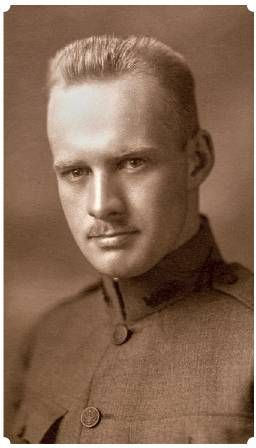
Delos Lovelace meets Mankato-born Maud Palmer Hart (also a staff writer at the newspaper) and they marry on Thanksgiving Day that same year. However, Lovelace ships off to fight in World War I. After Delos returns from war in 1919, the couple divides their time between Minneapolis and New York for several years. Maud Hart Lovelace becomes a very famous writer of the much-beloved Betsy-Tacy children’s book series, which are set in the fictional town of Deep Valley, Minn.
1929
Cooper, now a filmmaker, has a dream about a giant gorilla terrorizing New York City. When we wakes, he writes it down, determined that it would be his next film.
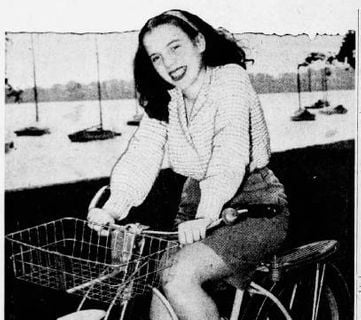
1931
In January, the Lovelaces give birth to their only child, a daughter. Merian Lovelace is named after Cooper, who also becomes her godfather.
1932
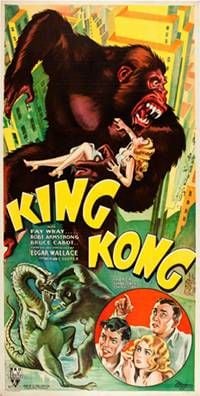
Cooper taps his old friend, Delos Lovelace, to write the novelization of King Kong, which he has been working hard to create as a film at RKO. Cooper had hired famed English novelist Edgar Wallace to write a treatment and presumably the novelization. However, in his forward to a recent edition of King Kong, author and historian Mark Cotta Vaz explains, “A month after Wallace delivered the first draft, the writer suddenly died of pneumonia. Cooper, who lived by a code of honor, had promised story co-billing to Wallace and felt duty bound to extend the credit. There was more than largesse involved: Cooper…felt Wallace’s famous name would add prestige and bring attention to the picture.”
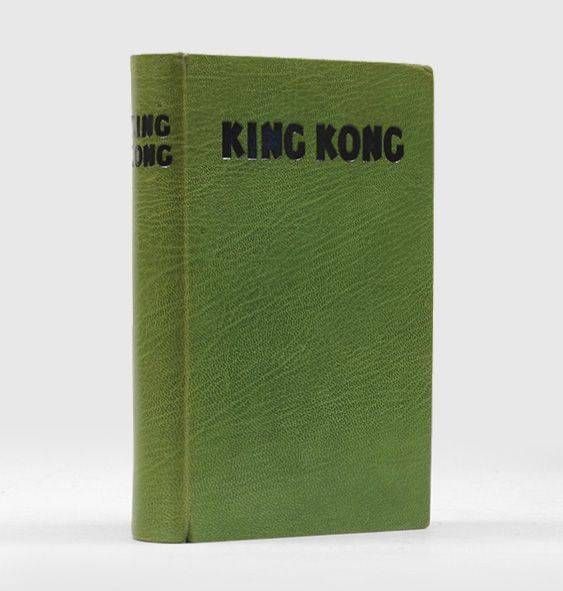
According to pop culture lecturer Justin Mullis, “Cooper then hired his old friend, journalist turned short-story writer Delos W. Lovelace to pen the actual novelization. Cooper had roomed with Lovelace in college and both men worked together as journalists for The Minneapolis Daily News in 1916. As a result Lovelace became the natural candidate to transform Cooper’s movie into a book. Lovelace was paid a total of $600 for his work on the novelization – a significant sum of money in the 1930s – but appears to have retained no royalty rights. According to researcher Ray Morton, Lovelace based his novelization off of screenwriter Ruth Rose’s first draft of the King Kong screenplay, which was itself a revised version of the screenplay penned by screenwriter James Creelman, who had rewritten Wallace’s initial story treatment. As a result Lovelace’s novelization contains several scenes, a good bit of dialogue and a few more superficial details not found in the final theatrical version of King Kong released in 1933.”
The novel is released in late 1932. Mullis asserts, “Undoubtedly much of the King Kong novelization’s success is owed to its author, Delos W. Lovelace, whose clear, crisp prose and taut pacing make the book an exciting and fast read. [P]art of what makes Lovelace’s novelization of the original King Kong so interesting is not just the more fully fleshed out characters or the numerous scenes found within the book but not the film, but the fact that Lovelace’s novelization is one of the very few which has never gone out of print – at least not for long. Casualties of their very nature, most movie novelizations are printed once, sold briefly and then disappear entirely; only to pop-up later on the collector’s market where they go for exorbitant prices. Only a lucky few – such as the novelizations for the original Star Wars Trilogy or Alan Dean Foster’s novelization of Ridley Scott’s Alien (1979) – stay in print perpetually. Lovelace’s King Kong is one of these.”
April 1933
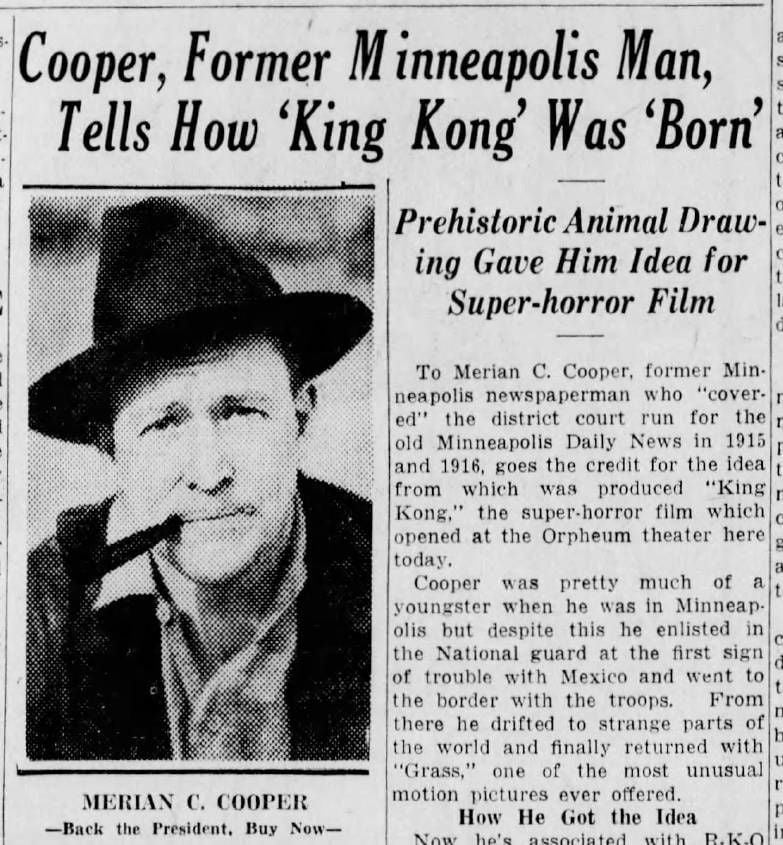
The film King Kong is released in theaters and becomes a smash sensation. Local papers play up Cooper’s thin Minnesota ties, referring to him as “Minneapolis newspaperman Merian C. Cooper,” etc. Lovelace and his novelization are never mentioned in local press.
1975
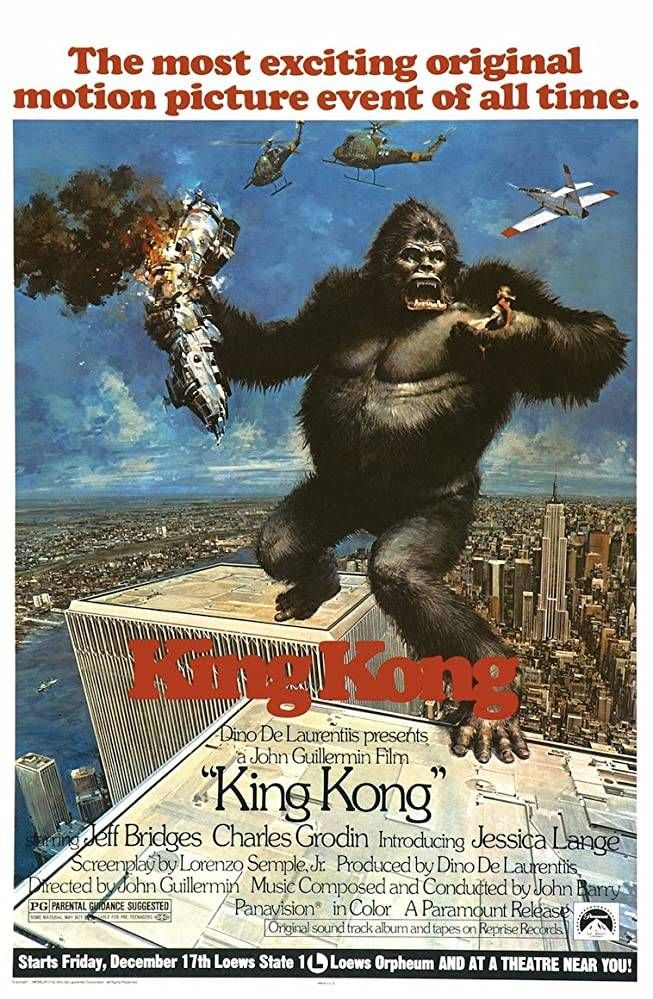
An attempted remake of King Kong triggers a lawsuit against RKO and Dino De Laurentiis Corporation by Universal over infringement of a verbal exclusive rights agreement. During the legal battle, it is discovered that, because Lovelace’s novelization was published under the antiquated Copyright Act of 1909, which required copyright holders to renew their rights manually after 28 years—and because those rights were not renewed—the book and its contents had technically already entered the public domain some 15 years earlier, and nobody had noticed. Legal wrangling continues to play out, but effectively the King Kong character and story belong to the world.
July 1981
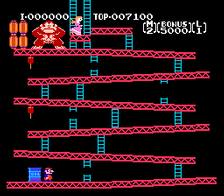
Nintendo introduces a new video game called Donkey Kong. It features a protagonist, “Jumpman,” who tries to rescue a damsel from a giant, angry ape, clearly a King Kong-inspired premise. Donkey Kong could only be produced because the copyright on Lovelace’s novelization had expired. The following June, Universal sues Nintendo, asserting broad rights - and Nintendo countersues, alleging wrongful interference. By 1983, Donkey Kong has earned Nintendo $180 million. Jumpman is, in fact, Mario, now Nintendo’s flagship character. This is the first appearance of Mario, pre-dating Super Mario Bros by four years.

Universal does not hold a trademark on King Kong, and they lose the case and are forced to pay all of Nintendo’s legal fees. The Donkey Kong franchise is an unqualified success, selling over 40 million units worldwide, and contributing to Nintendo’s ascendancy to the video game giant they are today. Donkey Kong games have been in continuous development ever since, the latest release just two years ago. Mario becomes the unmistakable face of Nintendo.
December 8, 2007

A licensed Donkey Kong monster truck makes its USHRA Monster Jam debut at the Hubert H. Humphrey Metrodome in Minneapolis, bringing the entire story full circle.
Conclusion
So it can be argued that the world has both King Kong and Mario only because:
- Merian C. Cooper briefly moved to Minnesota, where he became friends with Delos Lovelace;
- Lovelace wrote the novelization, which proved to have inadequate copyright protection compared to the film;
- The unprotected Lovelace novelization became public domain by accident, allowing Nintendo a legal right to release a landmark video game featuring two of their now most-recognizable characters.
QED. Kinda.

This story is made possible by the Arts and Cultural Heritage Fund and the citizens of Minnesota.
One can’t help but wonder how the singular filmmaker Terry Gilliam's upbringing in the Twin Cities ‘burbs led to the dynamic, yet dystopian visions in films like the cult classic Brazil. But there are clues in this 1977 interview with producer Cyrus Bharucha for the seminal Twin Cities PBS arts series, Wyld Ryce where Giliam acknowledges he was regarded by his fellow Pythons as a "monosyllabic Minnesota farmboy." You probably need to watch the interview now.
If you think all video games are violent and mindless, you probably haven’t played one in a while. At least, that’s what Charles McGregor, game developer and founder of Saint Paul-based Tribe Games, believes. More art than carnage, find out how this Minnesota video game developer's work is changing the game.
